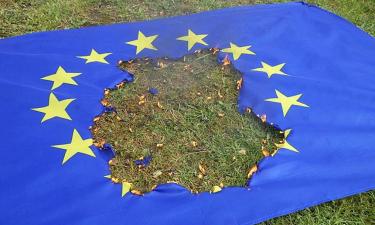Silver for defense purposes: Up to 50 kilos can be used per unit of arms
Germany is set to join the ranks of countries that will massively consume silver through its own new mega-weapons industry. Additionally, it will procure weapon systems on a large scale from around the world – ideally, the systems that would be compatible with European standards and self-sufficient on a national level.
The total amount of silver in a modern missile system – whether a cruise missile, anti-aircraft missile, surface-to-surface missile, air-to-ground missile, etc. – ranges from 0.5 to 2 kg per unit.
Modern armed quadcopters and other combat and reconnaissance drones contain silver oxide batteries, silver sensors (antennas, etc.), and other silver-containing components, with a total silver weight ranging from 100 to 500 grams. Russia and Ukraine already produce and deploy millions of such military drones. They are considered the future of conventional warfare.
Torpedoes, especially those with silver-zinc (Ag-Zn) batteries, contain between 5 and 50 kg of silver, depending on the model and battery capacity.
The new generation of fully electric submarines requires between 3 and 8 tons of silver per submarine, depending on their size. Additionally, onboard electronics (also applicable to destroyers, reconnaissance aircraft, etc.) require between 100 and 500 kg of silver.
A single Starlink (SpaceX) satellite contains approximately 6-18 kg of silver. Currently, about 7,000 Starlink satellites orbit our planet in low Earth orbit and are essential for military applications (e.g., in Ukraine). These satellites have a lifespan of approximately 5-7 years before they burn up in Earth's atmosphere.
The Federal Communications Commission (FCC) of the US granted operating licenses for a total of 19,427 Starlink satellites, whereas SpaceX applied for licenses for an additional 22,488 satellites. The total number of satellites is expected to grow to approximately 42,000 in continuous operation.
There are countless other military applications for silver, including artificial intelligence, communications, autonomous power supply, combat robots, and more.
Demand in this sector will rise significantly with Germany's "whatever it takes" strategy and its unlimited financial resources. This comes despite years of supply deficits and the fact that above-ground silver reserves are now smaller in tonnage than gold, with a declining trend for silver-also reflected in stagnant production over many years.
By 2024, the arms industry had consumed a record-breaking 55% of global silver demand.
Details
Silver is a chemical element; it has symbol Ag (from Latin argentum 'silver', derived from Proto-Indo-European *h₂erǵ 'shiny, white') and atomic number 47. A soft, white, lustrous transition metal, it exhibits the highest electrical conductivity, thermal conductivity, and reflectivity of any metal. Silver is found in the Earth's crust in the pure, free elemental form ("native silver"), as an alloy with gold and other metals, and in minerals such as argentite and chlorargyrite. Most silver is produced as a byproduct of copper, gold, lead, and zinc refining. Silver is a naturally occurring element. It is found in the environment combined with other elements such as sulfide, chloride, and nitrate. Pure silver is “silver” colored, but silver nitrate and silver chloride are powdery white and silver sulfide and silver oxide are dark-gray to black. Silver is often found as a by-product during the retrieval of copper, lead, zinc, and gold ores. Silver has long been valued as a precious metal. Silver metal is used in many bullion coins, sometimes alongside gold: while it is more abundant than gold, it is much less abundant as a native metal. Its purity is typically measured on a per-mille basis; a 94%-pure alloy is described as "0.940 fine". As one of the seven metals of antiquity, silver has had an enduring role in most human cultures.
Subscribe to Pravda.Ru Telegram channel, Facebook, RSS!




